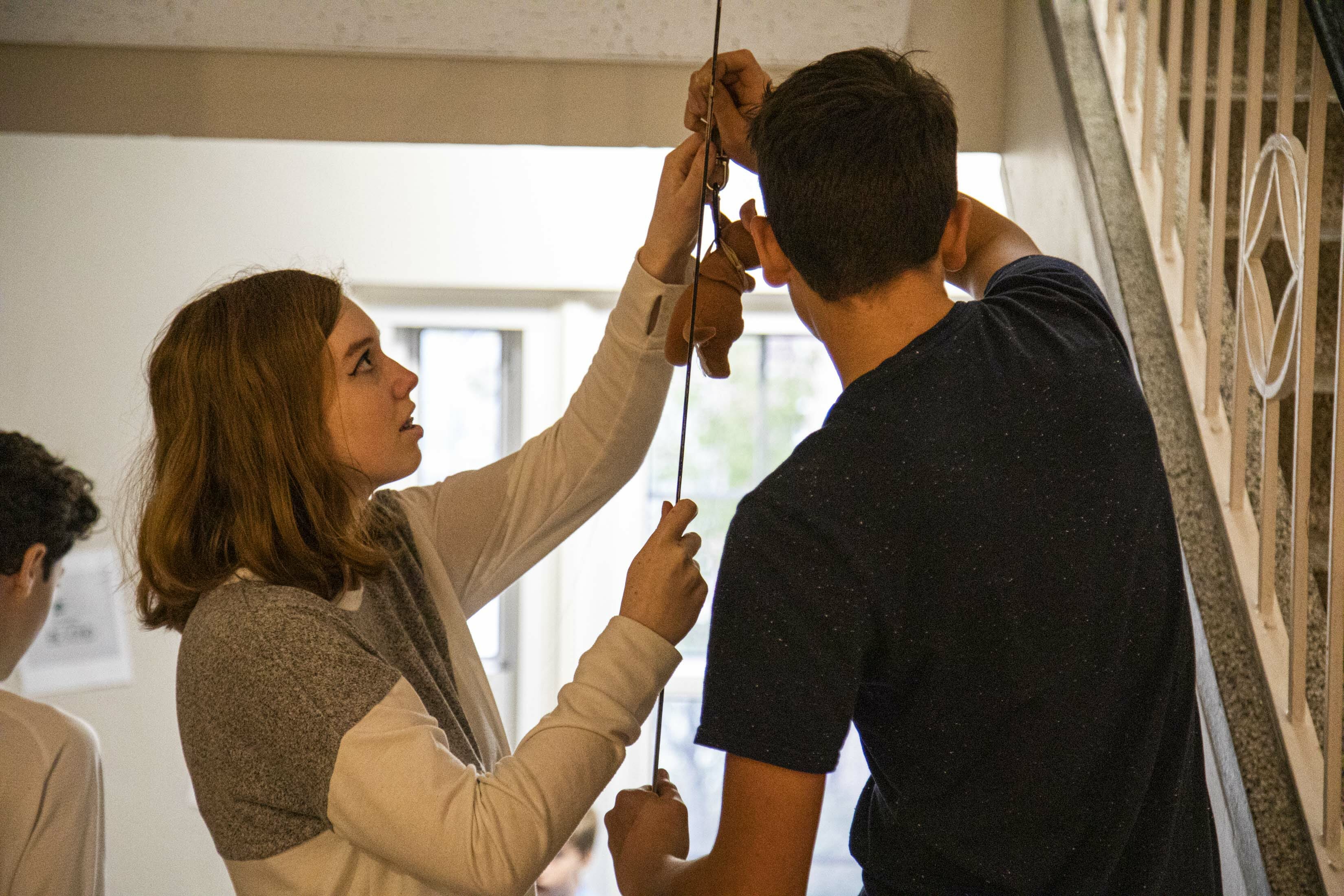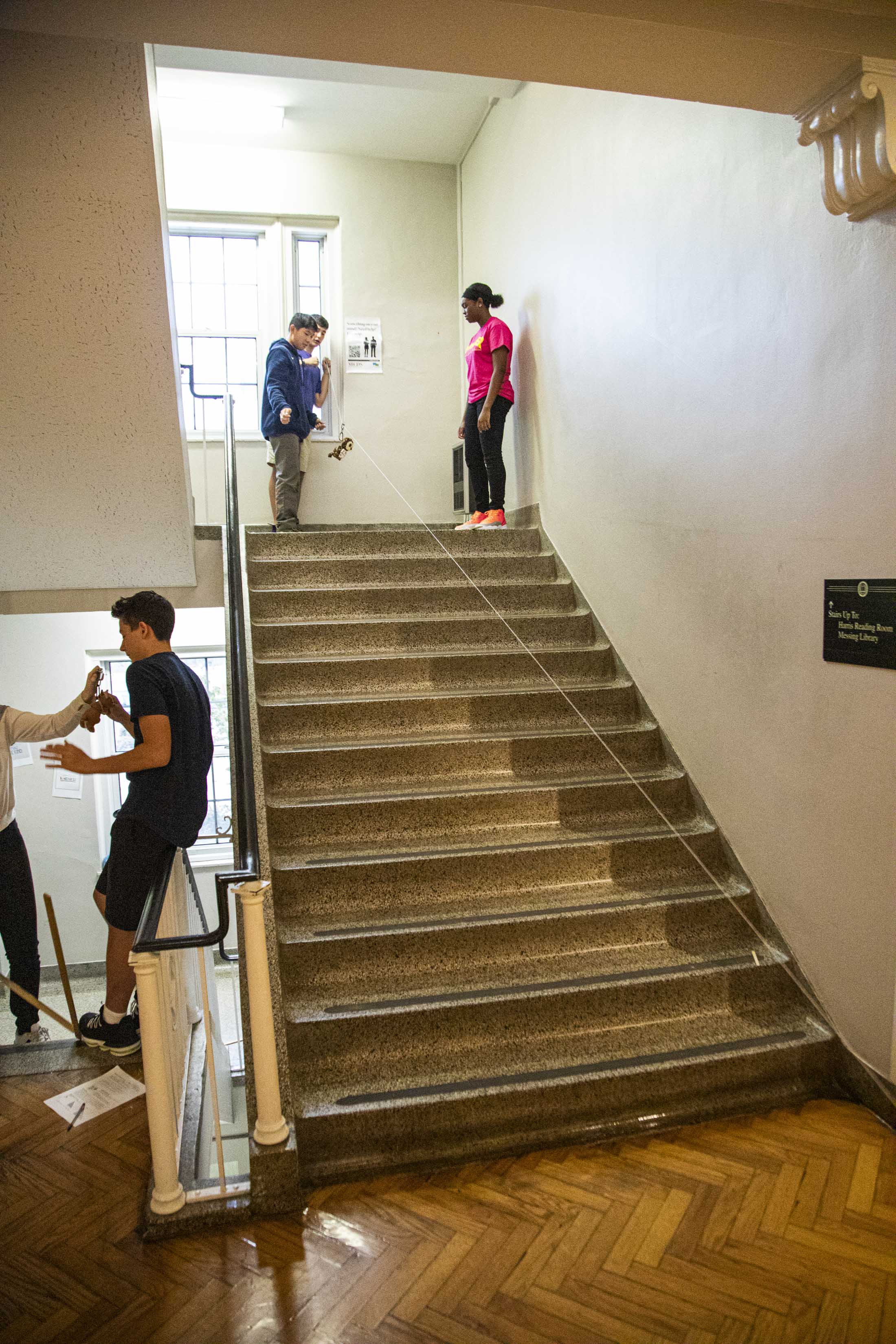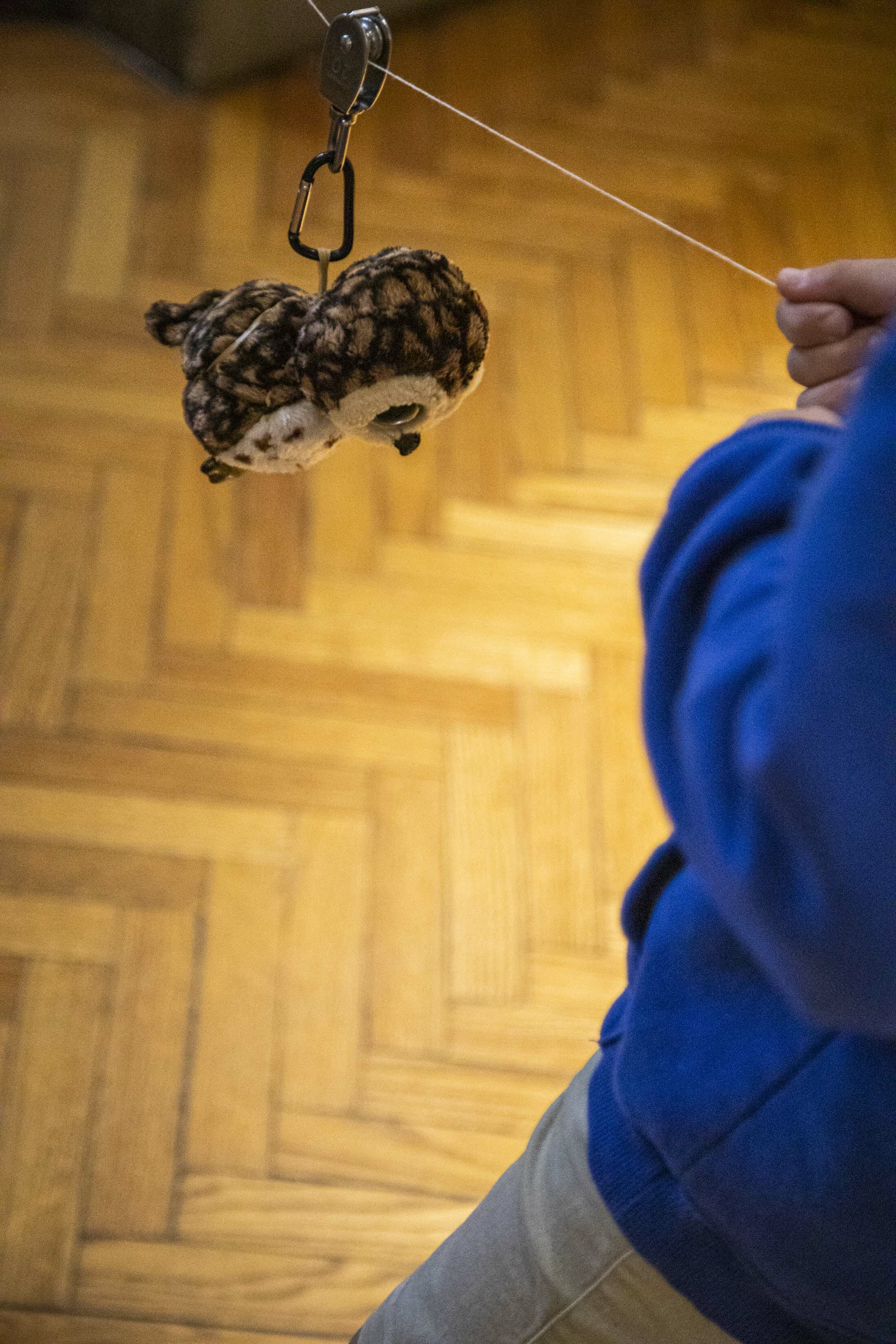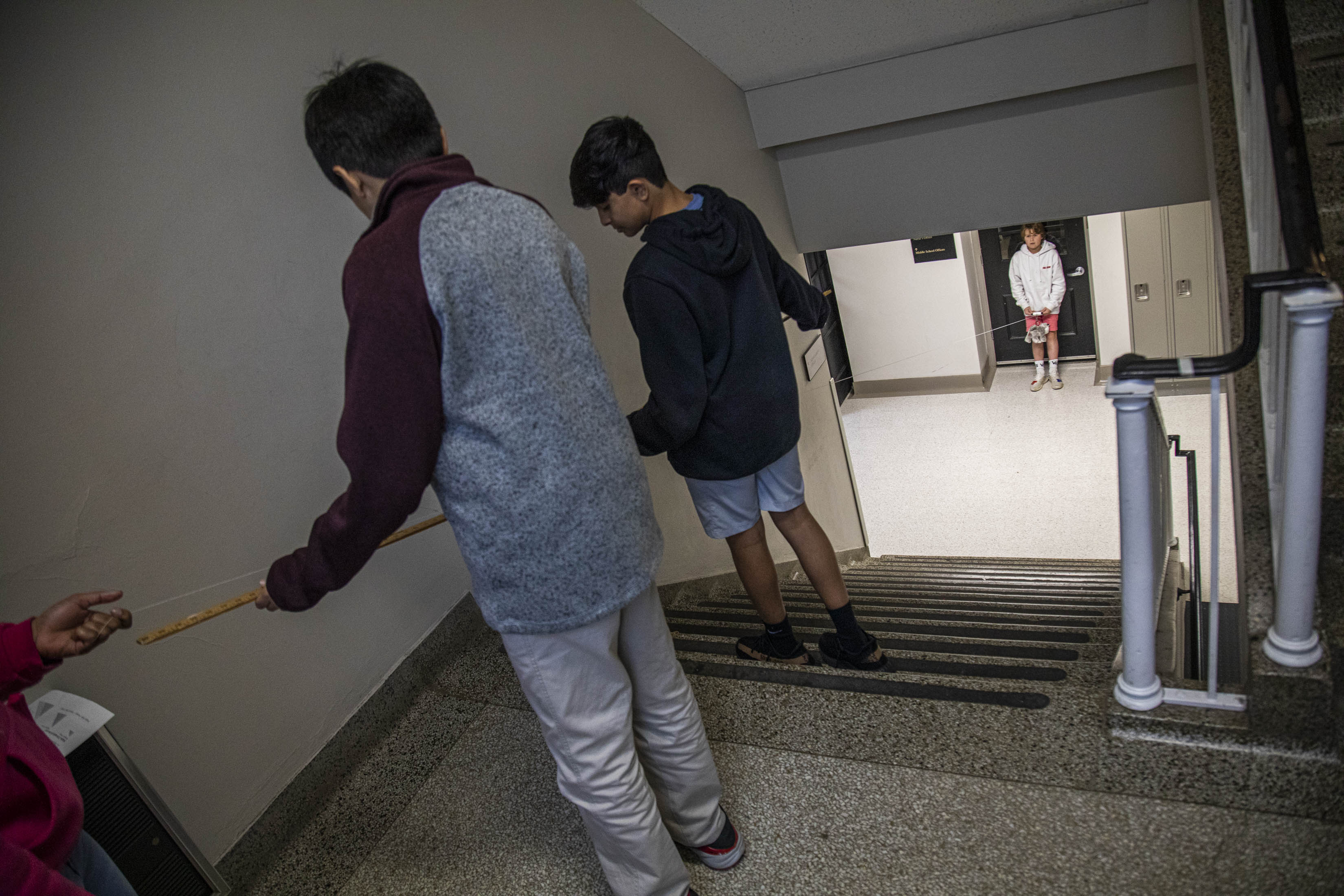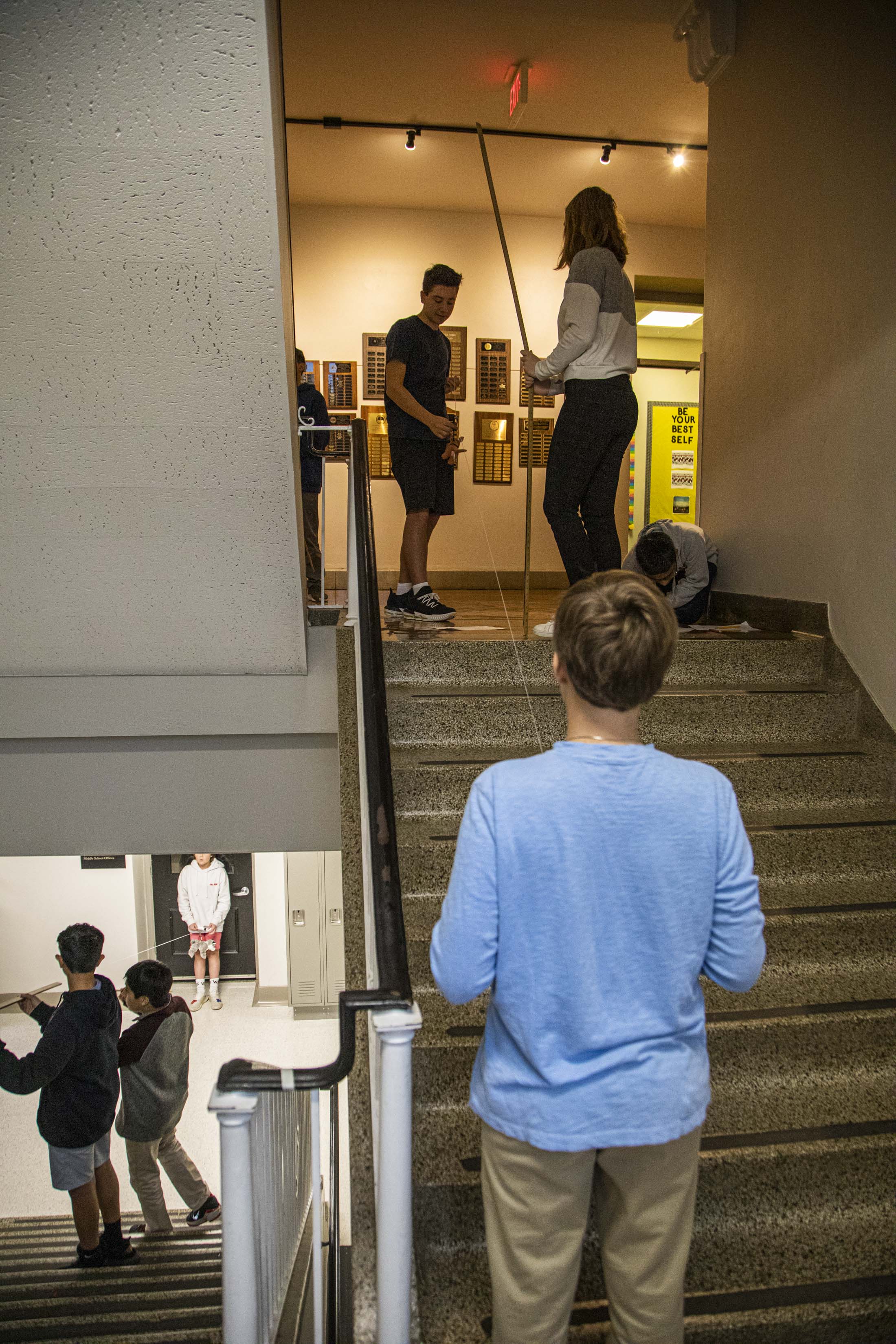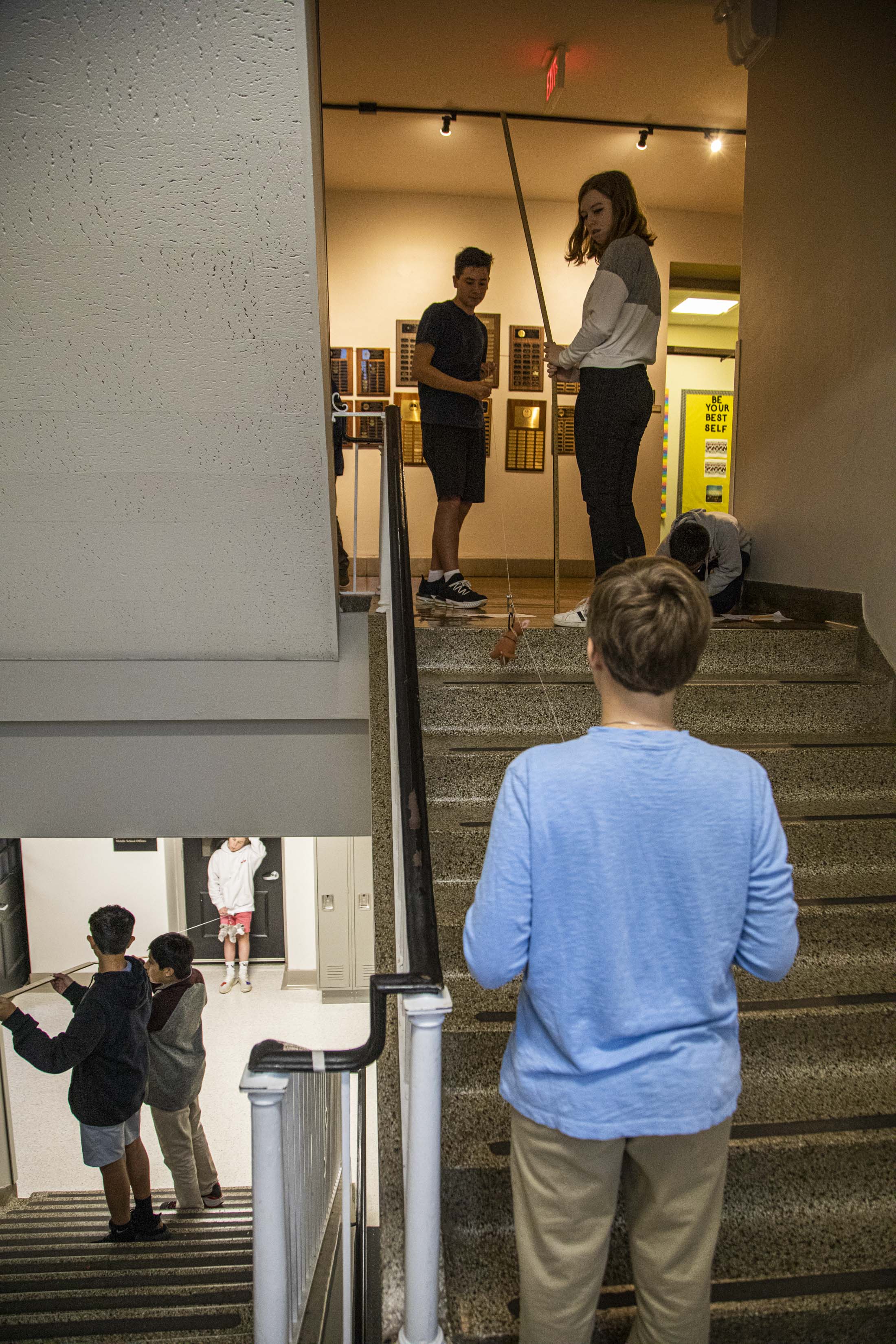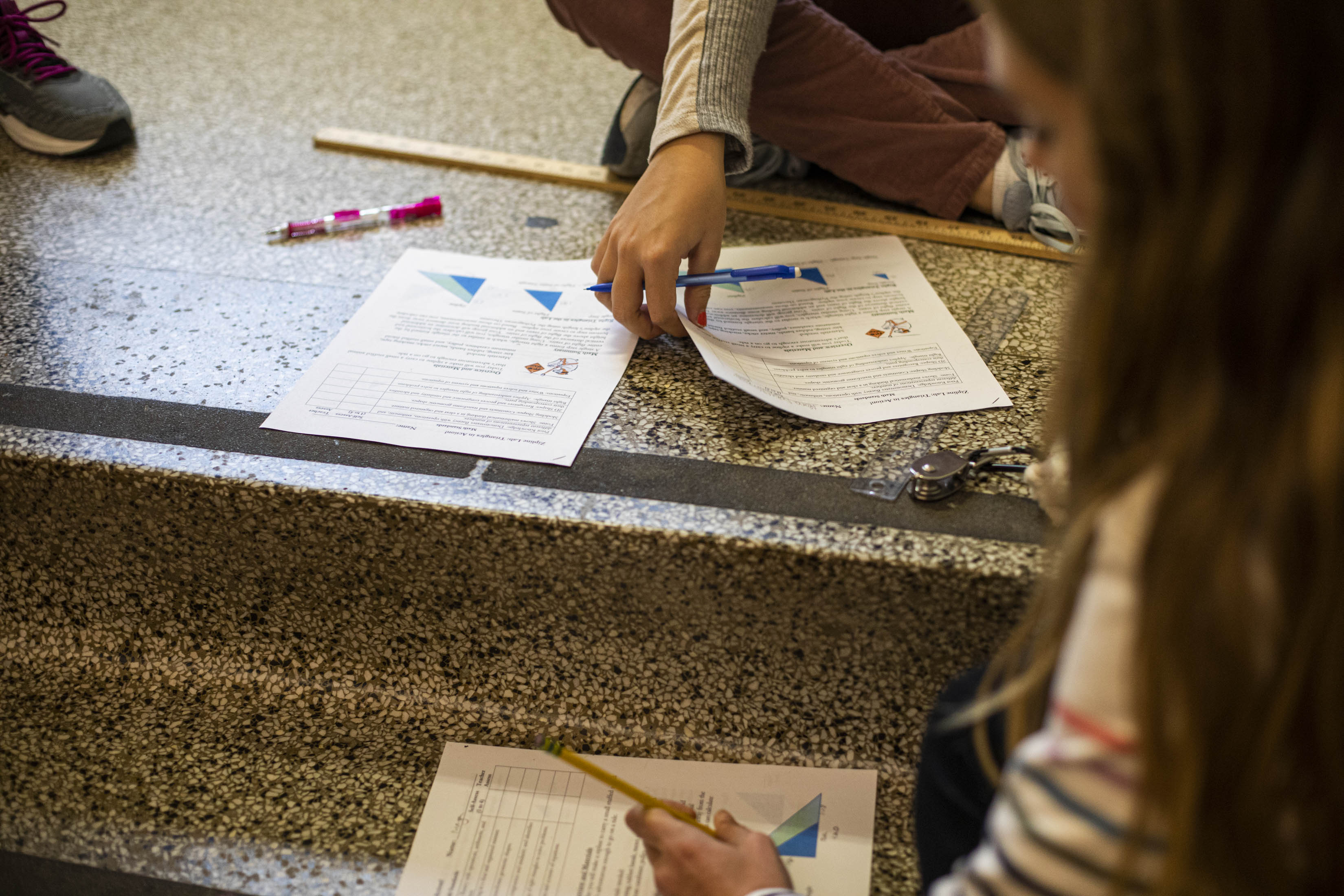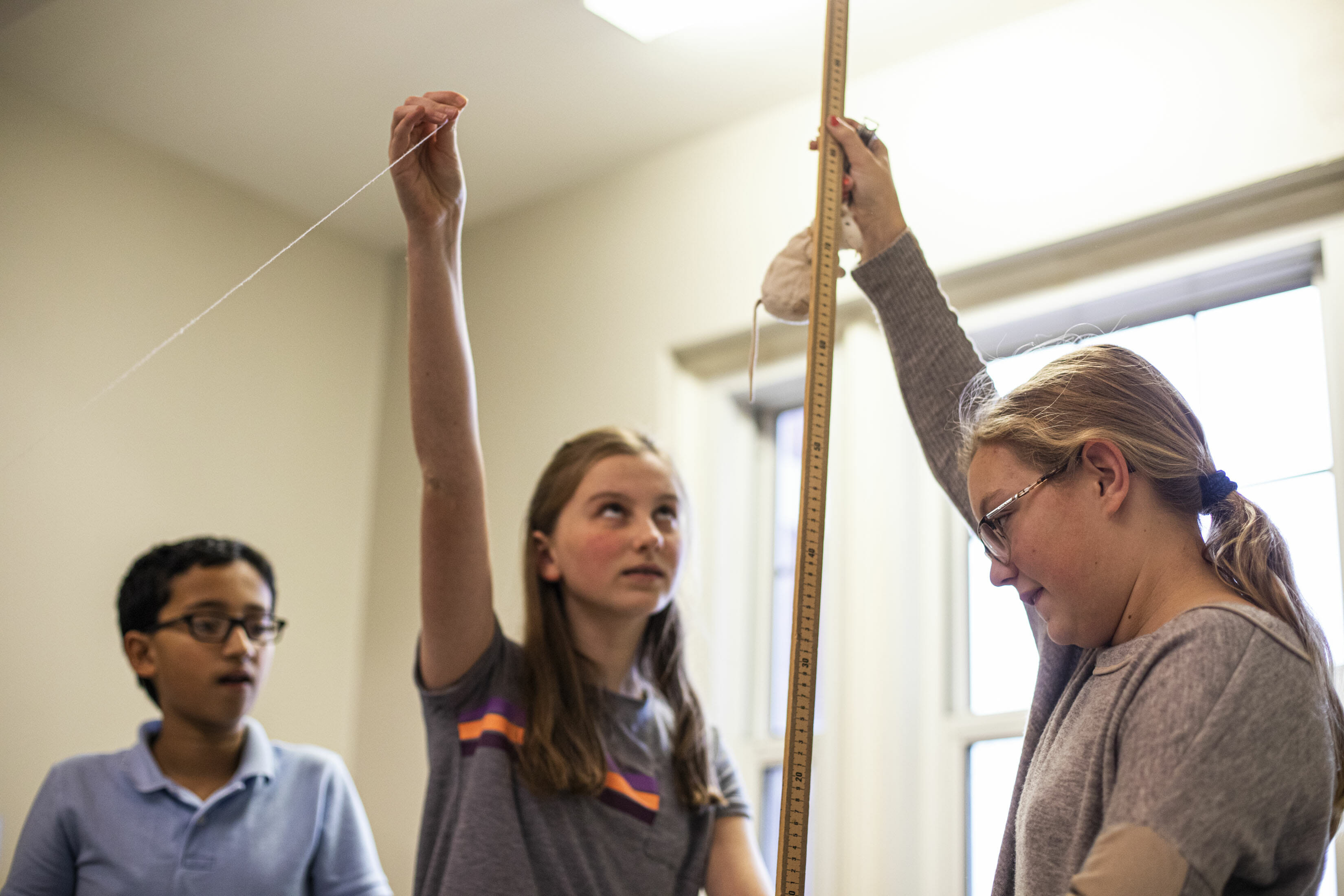Middle School mathematicians put triangles – and the Pythagorean Theorem – to work this week as part of their Zipline Lab. They used kite string, rubber bands, meter sticks, masking tape, small carabiners, pullies and stuffed animals to create ziplines in the Middle School staircases.
They first measured the height and width of a single stair and multiplied those figures by the number of steps (the constant of proportionality) to get the height and width of the full flight of stairs. Students then determined an appropriate additional height for a start and an appropriate landing zone distance width, marking the new starting and ending locations. Finally, they calculated zipline length using the Pythagorean Theorem.
In case you don’t remember the Pythagorean Theorem from when you were in middle school: the theorem is named after an ancient Greek mathematician and states that for a right triangle, the square of the hypotenuse (the side opposite the right angle) is equal to the sum of the squares of the other two sides. The equation might be familiar: a² + b² = c².
The experiment then turned fun as students used carabiners to attach their stuffed animal friends to their ziplines and let them fly.
The goal of the lab was to demonstrate the modeling power of linear equations and the Pythagorean Theorem in a hands-on approach. Students took away the notion that real-life scenarios are built on math and that engineering uses the skills that we learn in the classroom. The lab also provided students the opportunity to employ teamwork and problem solving to figure out how to measure on large scales. They analyzed the field data that they captured, and reflected on how measurement errors and reporting inaccuracies could affect the design of a project. Finally, they reflected on what they thought was important and how they might improve if they conducted their experiment again. They also reported on how they specifically contributed to their team effort.
Great job, 7th grade mathematicians!

